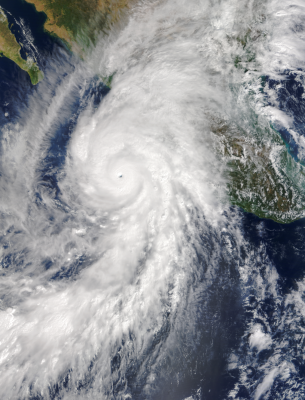Capturing the Influence of the El Niño-Southern Oscillation on Eastern North Pacific Tropical Cyclones
Heat energy available at the ocean surface is extracted by passing storms and used as fuel for their intensification. Thus, better predictions of ocean heat content could lead to improved forecasts of tropical cyclones. The El Niño-Southern Oscillation (ENSO) exerts a significant influence on the heat content of the Pacific Ocean over interannual timescales. A new study shows that the ENSO Longitude Index (ELI) better explains the interannual variations in the upper‐ocean heat content and tropical cyclone activity in the Eastern North Pacific basin than traditional empirical indices of ENSO based on fixed thresholds.
The obtained results advocate for the use of this new index for the prediction of Eastern North Pacific tropical cyclones at significant lead times. Because ENSO primarily influences these storms through oceanic processes that occur over several months, the ocean’s memory can be leveraged to increase the forecast window. ELI significantly outperforms other well-known ENSO indices at lead times of 5 to 6 months for predicting a variety of tropical cyclone metrics and still demonstrates comparatively higher skill at shorter lead times of 2 to 3 months.
Various ENSO indices averaged over winter months (December to February) were used to predict tropical cyclone activity during the following season 5 to 6 months later. ELI performed significantly better than other well-known indices, such as the Oceanic Niño Index. An analysis of upper-ocean heat content was performed, and ELI explained more variance in the ocean heat content in the region of interest than other indices. This is because variations in the equatorial Pacific thermocline associated with ENSO are more in line with ELI. During an El Niño event, the warm water that traditionally resides in the tropical western Pacific migrates to the eastern part of the basin. By accounting for changes in the Walker Circulation and the associated transport of warm water through planetary wave propagation, ELI better explains the interannual variations in upper‐ocean heat content in the studied region. These results were validated in high-resolution Energy Exascale Earth System Model simulations, highlighting the broad applicability of the main conclusions.

